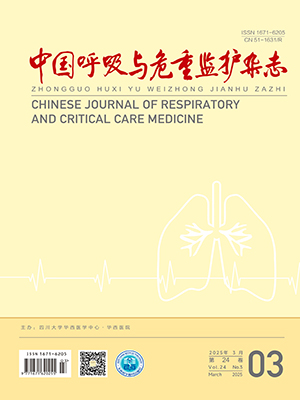Objective To explore the protective effects of liver X receptor-αactivator ( LXRα)T0901317 on rats with acute lung injury ( ALI) . Methods Seventy-two male Wistar rats were randomly divided into three goups, ie. a control group, a LPS group, and a T0901317 group. Artery blood gas analysis,lung tissue wet/dry weight ratio,myeloperoxidase activity, and lung histopathological changes were measured.The expressions of LXRαand TNF-αmRNA in lung tissue were detected by RT-PCR. The protein levels of
TNF-αand LXRαwere examined with ELISA and immunohistochemistry, respectively. Results In the ALI rats, PaO2 decreased, lung W/D weight ratio and myeloperoxidase activity increased significantly compared with the control group ( P lt; 0. 05) . Histopathological examination also revealed obvious lung injury. In the
LPS group, the expression of TNF-αmRNA in lung tissue and the level of TNF-αprotein in lung homogenate and serum increased markedly( all P lt; 0. 05) while the expression of LXR-αmRNA declined significantly ( P lt; 0. 05) . Immunohistochemical staining showed that lung tissues of the normal rats expressed LXRα
significantly but in the LPS group the expression of TNF-αand LXR-αin lung tissue decreased markedly ( P lt;0. 05) . After the treatment with T0901317, the expressions of LXR-αin lung tissues were significantly higher than those in the LPS group both at the mRNA and the protein level ( P lt; 0. 05) . Conclusion T0901317 plays an anti-inflammatory effect through up-regulating the expression of LXR-αand suppressing the expression of TNF-α, thus reduces the infiltration and aggregation of inflammatory cells in lung tissue.
Citation: XU Jing,XIAO Bo,HE Chunlin,WANG Jianchun.. Protective Effects of Liver X receptor-αActivator T0901317 on Rats with Acute Lung Injury. Chinese Journal of Respiratory and Critical Care Medicine, 2011, 10(3): 247-251. doi: Copy
Copyright © the editorial department of Chinese Journal of Respiratory and Critical Care Medicine of West China Medical Publisher. All rights reserved




